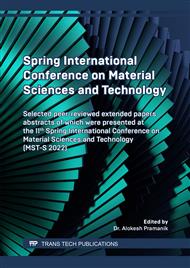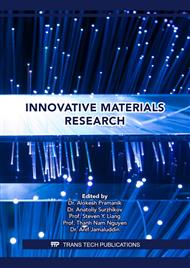p.9
p.15
p.21
p.27
p.39
p.47
p.53
p.65
p.71
Surface Improvements on Silver Streak Marks of Injection Molded Moisture Plastics Using Gas Counter Pressure and Plasticizing Optimization
Abstract:
Plastic pellets contain a certain percentage of moisture. During injection molding, the moisture appears as silver streaks on the molded part surface. Therefore, drying operation before molding is an indispensable requirement. This is not only time-consuming but also requires additional energy consumption and cost. This study investigates whether silver streak can be minimized and improved by using gas counter pressure (GCP) to restrict the fountain flow effect in the melt filling process. Effect of GCP values on the silver-streak appearance and the associated surface gross were investigated. The higher the GCP pressure used, the less the silver streaks appeared. When the used GCP pressure reached 50 bar, the silver streaks were no longer seen on the surface, regardless of the moisture content. Moreover, a new monitoring method based on the integral value of the pressure was also built up to assist in plasticizing parameter optimization. Molded parts with a pressure integral value higher than a critical value were no longer troubled by sliver streaks from moisture. This can be a useful way to optimize process parameters when molding moisture contained plastic material.
Info:
Periodical:
Pages:
39-45
Citation:
Online since:
June 2022
Authors:
Price:
Сopyright:
© 2022 Trans Tech Publications Ltd. All Rights Reserved
Share:
Citation:



